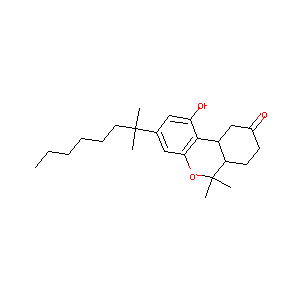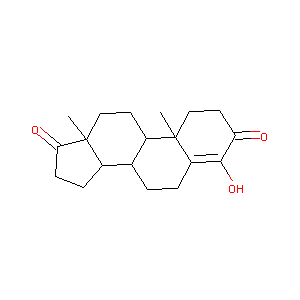| 1 |
Recurrent recessive mutation in deoxyguanosine kinase causes idiopathic noncirrhotic portal hypertension.Hepatology. 2016 Jun;63(6):1977-86. doi: 10.1002/hep.28499. Epub 2016 Mar 31.
|
| 2 |
Drugs@FDA. U.S. Food and Drug Administration. U.S. Department of Health & Human Services. 2015
|
| 3 |
Novel 1',1'-chain substituted hexahydrocannabinols: 9-hydroxy-3-(1-hexyl-cyclobut-1-yl)-hexahydrocannabinol (AM2389) a highly potent cannabinoid r... J Med Chem. 2010 Oct 14;53(19):6996-7010.
|
| 4 |
Cloning and pharmacological characterization of the dog cannabinoid CB?receptor. Eur J Pharmacol. 2011 Nov 1;669(1-3):24-31. doi: 10.1016/j.ejphar.2011.08.002. Epub 2011 Aug 19.
|
| 5 |
The taiwaniaquinoids: a review. J Nat Prod. 2010 Feb 26;73(2):284-98.
|
| 6 |
ADReCS-Target: target profiles for aiding drug safety research and application. Nucleic Acids Res. 2018 Jan 4;46(D1):D911-D917. doi: 10.1093/nar/gkx899.
|
| 7 |
Screening of selected pesticides for inhibition of CYP19 aromatase activity in vitro. Toxicol In Vitro. 2000 Jun;14(3):227-34.
|
| 8 |
Mammalian lignans and genistein decrease the activities of aromatase and 17beta-hydroxysteroid dehydrogenase in MCF-7 cells. J Steroid Biochem Mol Biol. 2005 Apr;94(5):461-7.
|
| 9 |
Androgen- and estrogen-receptor mediated activities of 4-hydroxytestosterone, 4-hydroxyandrostenedione and their human metabolites in yeast based assays. Toxicol Lett. 2018 Aug;292:39-45. doi: 10.1016/j.toxlet.2018.04.026. Epub 2018 Apr 24.
|
|
|
|
|
|
|


